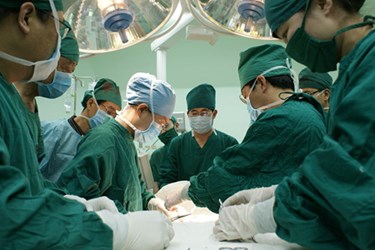Smart Hydrogel Prevents Graft Rejection
By Chuck Seegert, Ph.D.

For many patients receiving a tissue transplant leads to an immeasurably greater quality of life. This benefit, however, comes with a price, as most patients must take immunosuppressive drugs to keep their body from rejecting their transplant. This may soon be over, however, thanks to a newly developed hydrogel that acts locally at the transplant site — only when it is needed.
"This new approach to delivering immunosuppressant therapy suggests that local delivery of the drug to the grafted tissue has benefits in reducing toxicity, as well as markedly improving therapeutic outcomes, and may lead to a paradigm shift in clinical immunosuppressive therapy in transplant surgery," said Jeff Karp, Ph.D., division of biomedical engineering at Brigham and Women’s Hospital (BWH) and co-corresponding study author, in a recent press release.
The traditional method of delivering immunosuppressive drugs can lead to toxicities in the patient’s body. Generally, these drugs are taken in a pill form, which delivers drugs to the whole body, thus leading to many side effects. Additionally, suppressing the immune system makes the patient vulnerable to infection.
A new biomaterial may alleviate these issues, as it is injected at the site of transplantation where it self-assembles or gels. Being close to the transplant allows the hydrogel to release drugs immediately into the area where it is needed.
The hydrogel material has another interesting property to its design — its ability to release drugs into the local area only in response to conditions that indicate the drug is needed.
"Continuous release of the drugs irrespective of disease severity is a hallmark of existing drug delivery vehicles and could be a thing of the past,” said Robert Rieben, Ph.D., associate professor of transplantation immunology at the University of Bern’s department of clinical research, in the same press release. “Inflammation-directed drug release offers 'judicious use of locally injected drug’ that extends the release for months while eliminating systemic toxicity."
Once injected, the hydrogel remains inactive until it senses the presence of inflammation or an immune response from the transplant. At that point, it begins releasing drugs to prevent graft rejection. This allows the biomaterial to conserve the quantity of drugs that it holds, which can extend the time between administrations of new doses of the medicine-laden hydrogel.
The specifics of the research study were published online in the August 13, 2014 edition of Science Translational Medicine. The authors describe the hydrogel, which was loaded with the immunosuppressant drug tacrolimus. When a single dose was administered to rats that had received transplants, a graft survival of greater than 100 days was shown. In contrast to that, systemic tacrolimus was only able to maintain the graft for 33.5 days, while a control group that received no immunosuppression experienced failure after 11 days.
The development of therapeutic systems that respond to stimuli to provide drug release is an area that is accelerating in the research environment. For example, a story recently published by Med Device Online discusses a smart insulin delivery device that only releases insulin when needed by the patient.
Image Credit: “Organ transplant.” Global Panorama. 2014 CC BY-SA 2.0: https://creativecommons.org/licenses/by-sa/2.0/
